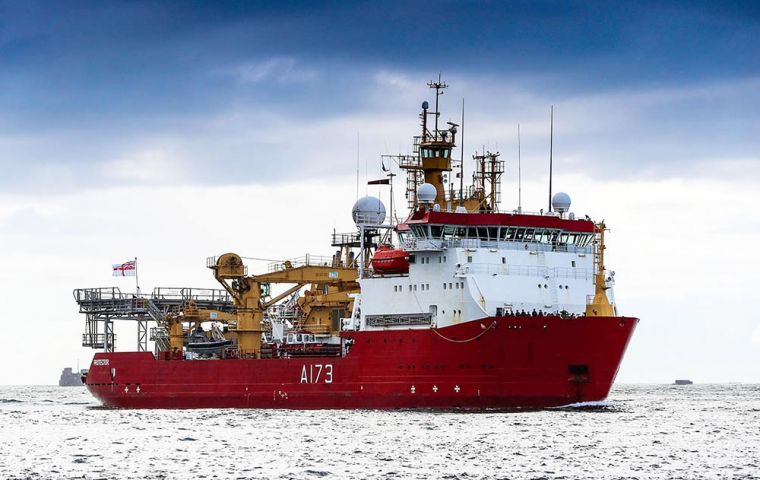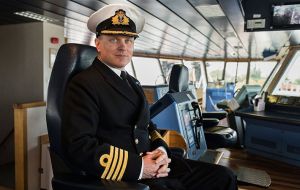MercoPress. South Atlantic News Agency
HMS Protector returns to Plymouth for first time in four years
 HMS Protector spent a lot of her time in Antarctica supporting scientists and surveying the channels and waterways around the frozen continent.
HMS Protector spent a lot of her time in Antarctica supporting scientists and surveying the channels and waterways around the frozen continent.  Earlier this year, HMS Protector and the BAS vessel RRS Ernest Shackleton assisted a team of 100 scientists who went to study a glacier the size of Great Britain
Earlier this year, HMS Protector and the BAS vessel RRS Ernest Shackleton assisted a team of 100 scientists who went to study a glacier the size of Great Britain  “You are able to go back to that core, pristine environment,” said Captain Matthew Syrett when discussing the importance of Antarctic expeditions.
“You are able to go back to that core, pristine environment,” said Captain Matthew Syrett when discussing the importance of Antarctic expeditions. The ship has spent time in Antarctica supporting scientists and surveying the channels and waterways. HMS Protector has returned to Plymouth for the first time in four years. The ship spent a lot of her time in Antarctica supporting scientists and surveying the channels and waterways around the frozen continent.
Protector is deployed for 330 days a year on operations. Her summers have been spent in the Southern Hemisphere conducting research on the fringes of the frozen continent, and austral winters in milder waters off west and east Africa.
“We have seen what probably a lot of people would never see in their lifetime,” said Leading Seaman Donna Harrison.
Wildlife in Antarctica is indeed unique, as Leading Seaman Harrison remarked, and part of HMS Protector’s role has been helping scientists working on the frozen continent.
Earlier this year, HMS Protector and the British Antarctic Survey’s (BAS) vessel RRS Ernest Shackleton assisted a team of 100 scientists who went to study a glacier the size of Great Britain
“You are able to go back to that core, pristine environment,” said Captain Matthew Syrett when discussing the importance of Antarctic expeditions.
Experts fear the melting Thwaites Glacier, which accounts for four per cent of the annual sea level rise each year, could eventually collapse and raise levels by more than two-and-a-half feet.
In preparation for a five-year program of field activities and research, ice-strengthened HMS Protector crunched through nearly 300 miles of ice to help deliver equipment necessary for the undertaking.
Four large tracked vehicles, 14 snow mobiles, numerous sledges, a caboose to act as living quarters and fuel and food to last nearly 5,000 days have all been taken to the Stange Ice Shelf ahead of the scientists' arrival next year.
It took 72 hours for HMS Protector's crew, and colleagues from the British Antarctic Survey, to deliver the 300 tons of machinery and supplies. The nearest British and American scientific research stations are more than 1,600 kilometers away from the research site. (Forces Network)




Top Comments
Disclaimer & comment rulesCommenting for this story is now closed.
If you have a Facebook account, become a fan and comment on our Facebook Page!